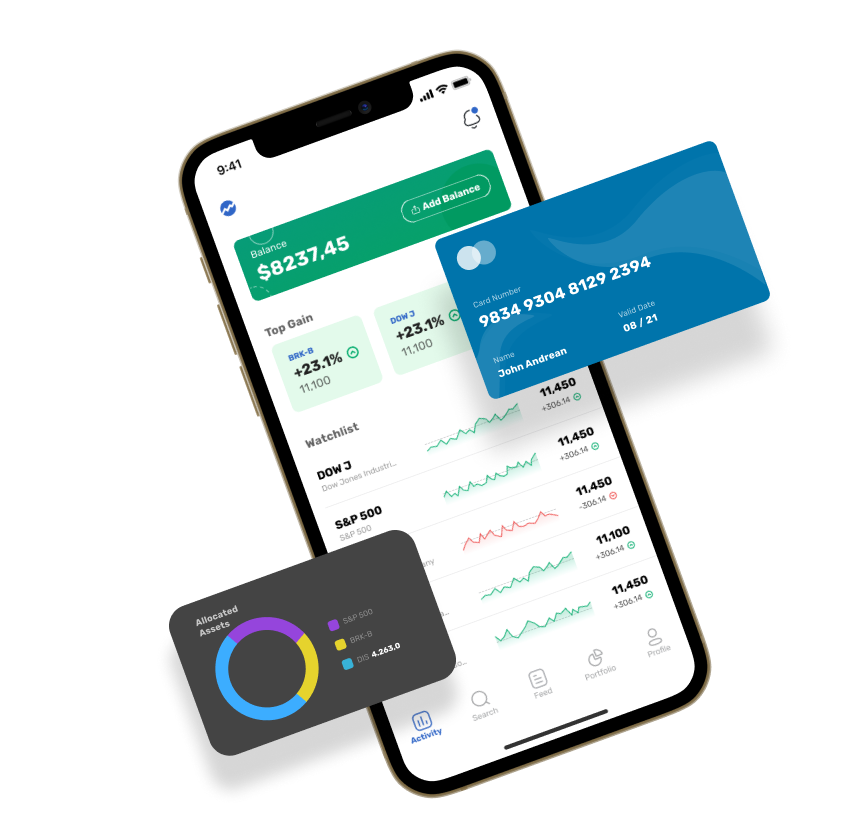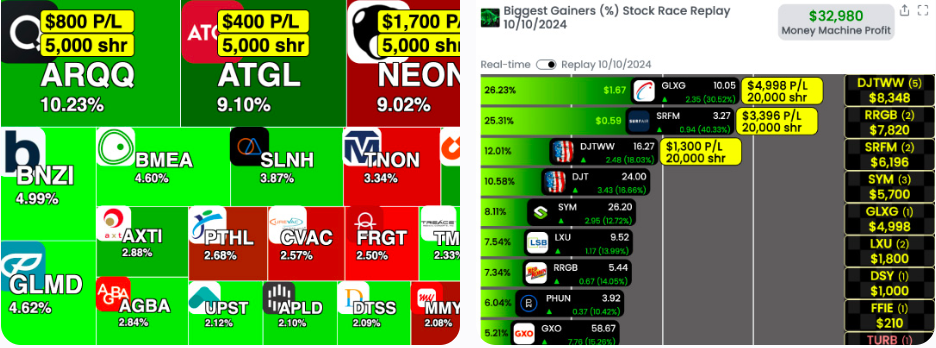You need to check the accuracy of AI trading platforms which predict and analyze the price of stock. This will assure you are using an accurate tool. These are the top 10 methods to test these platforms.
1. Backtesting Results
What to be looking for: Ensure the platform allows you to perform back-testing in order to see how accurate their predictions were basing their predictions on previous data.
The reason it's important: Backtesting lets you verify the reliability of an AI model. This can be done by comparing predicted outcomes with actual historic results.
Search for platforms that permit you to customise backtesting parameters, like duration and asset classes.
2. Real-time Performance Monitoring
What to look for: Assess how the platform performs under the market in real-time.
Why it matters Real-time performance is a better measure of its effectiveness than relying solely on historical backtesting.
TIP: Sign up for a free demo or trial account to compare real-time market forecasts with actual market movements.
3. Prediction Error Metrics
What to Look For Analyze metrics like Mean Absolute Error (MAE) or Root Mean Squared Error (RMSE), or R-squared, to measure prediction accuracy.
What is important The metrics evaluate the reliability of predictions when compared with actual results.
Tips: Platforms that publicly share these metrics are generally more transparent and reliable.
4. Ratio of Success and Win Rate
What to Check the platform's win rate (percentage for correct predictions) and the success rate (profitability on the basis of predictions).
Why it matters The high rate of win and success ratio indicates better forecasting accuracy and potential profits.
Beware of platforms which claim to have a high win rate (e.g. 90 percent %+),) because there is no way to ensure 100 percent success.
5. Benchmarking using Market Indices
What to look for: Compare the platform's predictions and performance to the major market indices such as S&P 500 or NASDAQ.
Why it's Important: This will help you determine if your platform outperforms or falls short of the overall market.
TIP: Don't only seek out short-term gains but also a consistent performance over a longer period.
6. Congruity of Market Conditions
What to Look For What to look for: See how the platform performs in different market conditions.
What is important The platform must be able of performing in all types of markets, not just when the market conditions are favorable.
Tip: Test the platform's predictions in volatile times or during market fluctuations.
7. Transparency in Methodology
What to look out for: Know the AI algorithms and models used (e.g. neural networks, reinforcement-learning).
What is important Transparency is crucial since it lets you assess the scientific accuracy and reliability of the system.
Beware of platforms that use a "black box" model that does not explain how the predictions were made.
8. Users Review and Independent Testing
What to Look for When selecting a platform: Read the reviews of users, and look for independent tests or third-party reviews.
What's important The independent reviews and tests give unbiased insight into the platform's accuracy and performance.
Check user reviews in forums like Reddit copyright and financial blogs.
9. Risk-Adjusted Returns
What to look for: Evaluate the performance of your platform using risk-adjusted measures such as the Sharpe Ratio or Sortino Ratio.
What is the significance of this measurement measures the risk involved in order to achieve returns. It provides the most complete picture of the performance.
Sharpe Ratios higher than 1 indicate better returns, adjusted for risk.
10. Long-term track record
What to Look For: Assess the platform's performance over a longer period (e.g., 3-5 years).
The reason it's important: Long term results are a far more reliable gauge of reliability when than short-term performance.
Do not use platforms that show only the results of a short-term study or a cherry-picked achievement.
Bonus Tip: Test using an Account Demo
Try out the platform's real-time predictions with a demo or trial account without risking your money. This allows you to evaluate accuracy and performance.
By following these tips You can assess the performance and accuracy of AI analysis and stock prediction platforms. Make sure you select one that is compatible with your investment goals and risk tolerance. Be aware that no platform can be guaranteed to be 100% accurate, so mixing AI insights with your own research is often the best option. Follow the most popular best ai stock trading bot free info for site tips including ai for stock predictions, trading with ai, ai trading, ai for investing, ai trade, market ai, ai investment platform, ai for investing, chart ai trading assistant, ai for trading and more.

Top 10 Ways To Analyze The Upkeep And Updates Of Ai Stock Trading Platforms
To ensure that AI-driven platforms for stock prediction as well as trading safe and effective, it is essential that they be regularly updated. Here are the top ten guidelines for evaluating updates and maintenance methods:
1. Updates Frequency
Find out the frequency of updates (e.g. every week, every month or every quarter).
Why are regular updates a sign of active development, and a responsiveness to market changes.
2. Transparency of Release Notes in Release Notes
Review the release notes for your platform to determine what improvements and changes have been made.
Release notes that are transparent demonstrate the platform's dedication to continual improvement.
3. AI Model Retraining Schedule
You can ask the AI model how often it's retrained.
Why? Markets change and models have to be re-evaluated to ensure precision.
4. Bug Fixes & Issue Resolution
Tips - Check the speed at which the platform resolves bugs and technical issues.
Why: Quick bug fixes help ensure the platform's reliability and functionality.
5. Security Updates
Tips: Check if the platform frequently updates its security protocols to safeguard trade and user information.
Why is cyber security essential in financial platforms to prevent attacks and fraud.
6. Integration of New Features
Tip: See if there are any new features added by the platform (e.g. advanced analytics and data sources.) in response to user feedback or market trends.
Why? Feature updates are a sign of creativity and responsiveness to customer needs.
7. Backward Compatibility
Tip: Ensure that updates do not disrupt existing functionalities or require significant reconfiguration.
The reason: Backward compatibility provides users have a smooth experience when they transitions.
8. Communication between Maintenance and Users Workers
Check out how your platform informs users about scheduled maintenance and downtime.
Why: Clear communication minimizes interruptions and increases trust.
9. Performance Monitoring & Optimization
TIP: Make sure the platform continually monitors metrics of performance (e.g. accuracy, latency) and improves the performance of systems.
Why: Ongoing platform optimization ensures that it stays efficient and scaleable.
10. Compliance with changes to the regulatory framework
Check whether the platform's policies and features have been updated to comply with new financial regulations, or privacy laws for data.
Why: To avoid legal liability and to maintain user trust, compliance with regulations is essential.
Bonus Tip: Integration of feedback from users
Check if updates and maintenance are based on feedback from users. This shows an approach that is based on feedback from users and a commitment to improving.
When you look at these aspects, you can make sure that the AI-powered stock prediction and trading platforms you pick are maintained, up-to-date and capable of adapting to changing market dynamics. Check out the recommended ai stock prediction recommendations for blog tips including best stock prediction website, ai software stocks, ai stock analysis, invest ai, best ai trading platform, ai stock prediction, best ai stock prediction, can ai predict stock market, stock trading ai, how to use ai for copyright trading and more.
